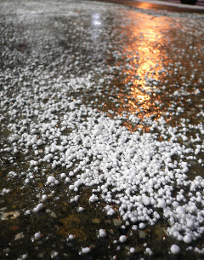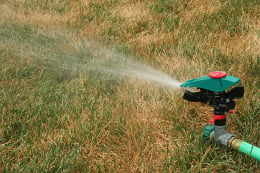 FAQ About Saline Soils
FAQ About Saline Soils
Q: What kinds of salts are harmful to my lawn?
A: Some salts are necessary for a lawn’s good growth. But any salts with sodium (like sodium chloride, the salt that we’re used to thinking about) can be harmful to your lawn in large amounts, particularly when planting grass seed.
Q: Why do sodium salts harm my lawn?
A: There are a lot of elements that your lawn needs for good growth in macro- and micro-amounts. Sodium is not one of those elements. What’s worse is that sodium will attach itself to cation exchange sites and prevent the lawn from accessing the nutrients it really needs, such as potassium, calcium, and magnesium. Sodium also dehydrates the roots by preventing them from absorbing as much water as they do normally.
Q: How do sodium salts accumulate in my lawn?
A: Some soils are more likely to accumulate salt because of the region they’re in; usually areas that have more evaporation than precipitation have more salt-laden soils. Poor soil drainage, high water tables, and heavy clay content can exacerbate the problem. Salt accumulation can also be man made. If you are irrigating your lawn with poor-quality, saline water, or if you used rock salts to melt ice and snow during the winter, you may be contributing to the accumulation of salt in your lawn.
Q: How can I tell that my lawn’s soil has excessive salt?
A: Visually, your lawn will have difficulty greening up in the spring. It will tend to be thin and brown, and it will not grow quickly. There may even be some burning on the leaves from the excess of salts, and a whitish or yellowish crust in the soil. You should have a soil test done to verify the visual clues you are noticing. Send a mix of 15 to 20 random soil samples to your local county extension office, and when you get the soil test report back, pay particular attention to the Electrical Conductivity (EC) and the Exchangeable Sodium Percentage (ESP). If the Electrical Conductivity is higher than 4 deci-siemens per meter (dS/m) or if the Exchangeable Sodium Percentage is higher than 15%, then your lawn’s soil has an excess of salts that interferes with the lawn’s growth.
Q: How can I improve a saline soil?
A: To make a soil less saline, you will need to flush the salts from the soil with excessive irrigations. Excess water will push the salts beyond the root zone, where they can no longer harm the lawn. This will only work in well-drained soils, however, so you may need to aerate the soil or incorporate organic amendments before you begin the heavy irrigations. If you do add organic amendments to the soil, make sure that they are not salt-heavy themselves. If a high water table is creating irrigation runoff, which prevents the leaching of salts from the soil, you may need to install subsurface draining. And try to avoid the use of rock salts next winter, so you don’t add to the salt accumulation problem.
